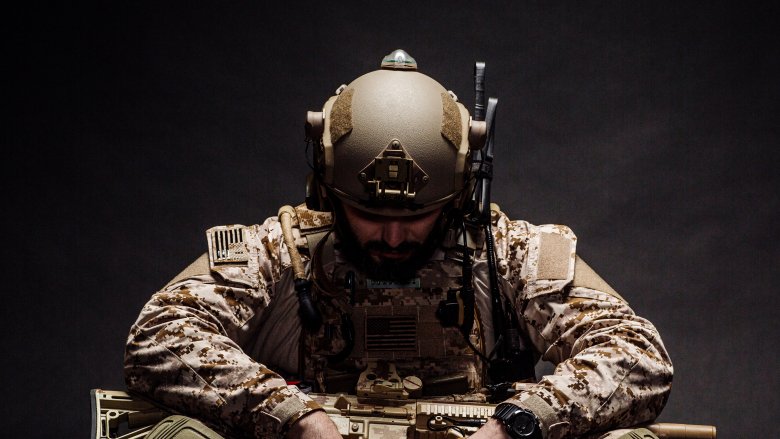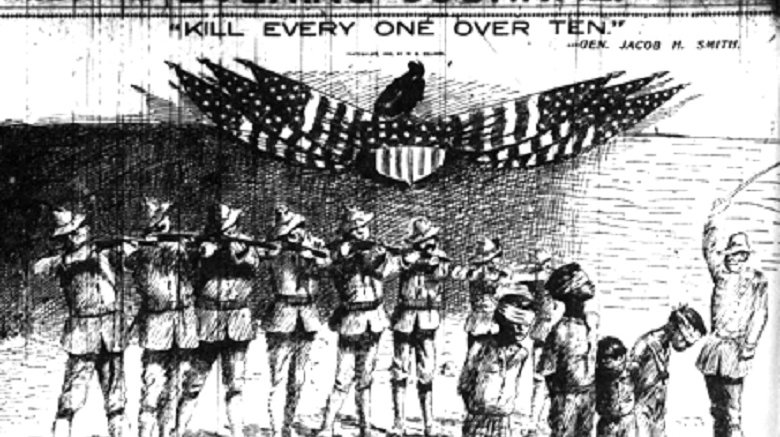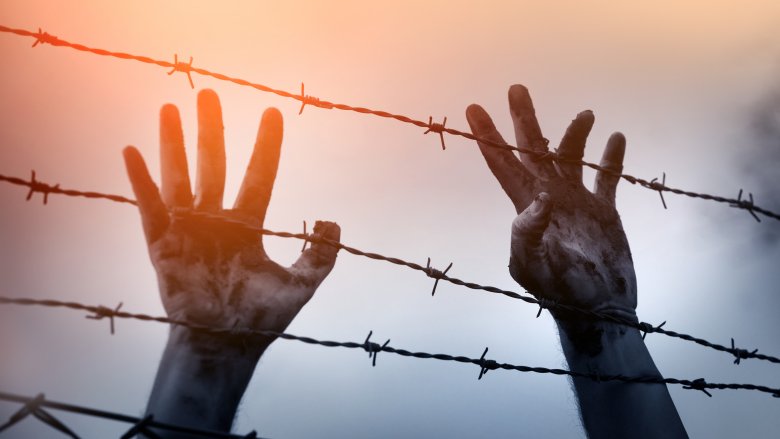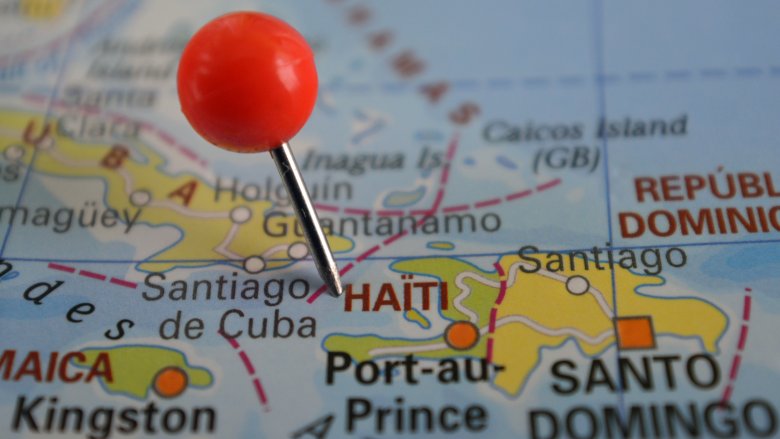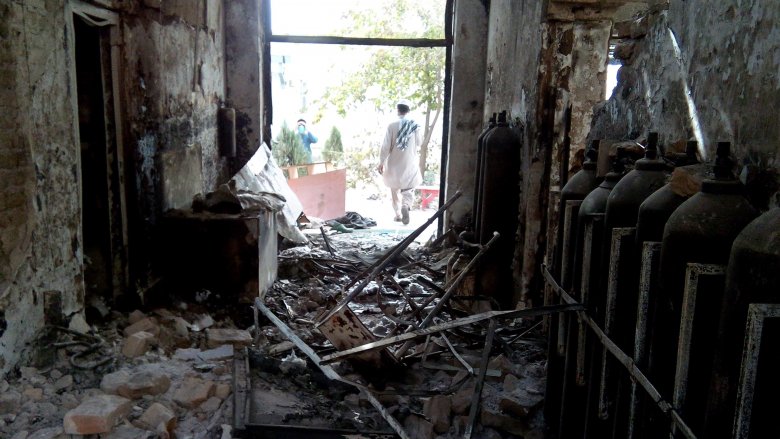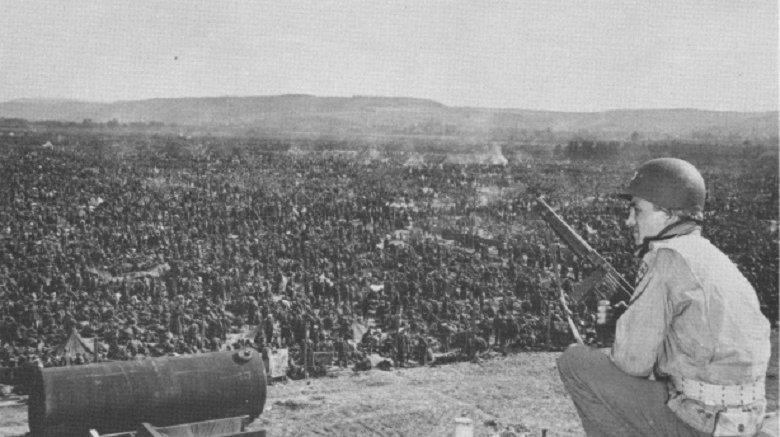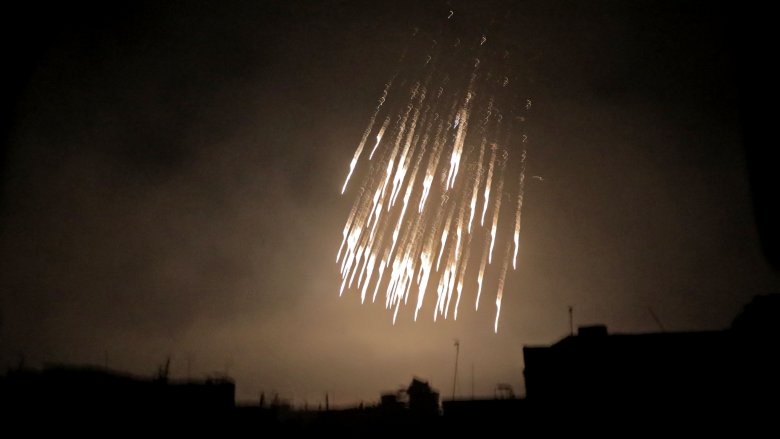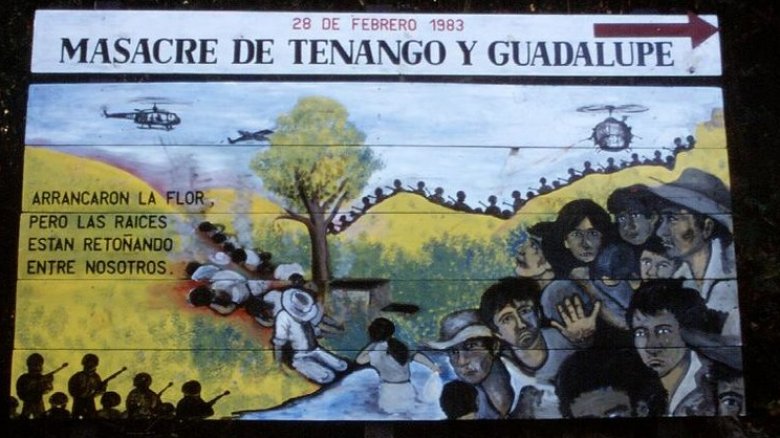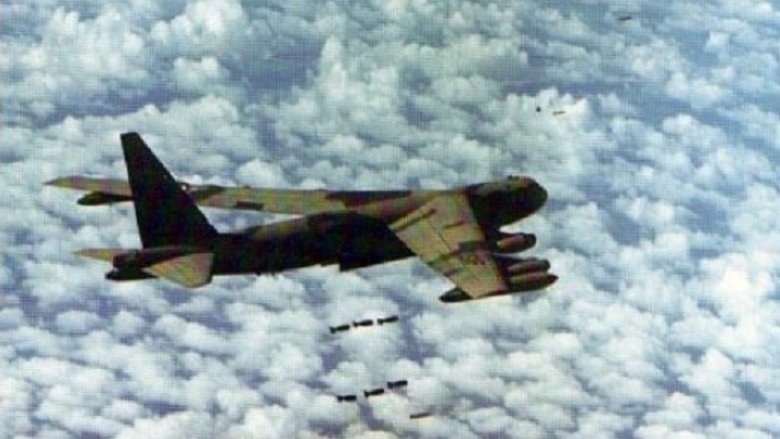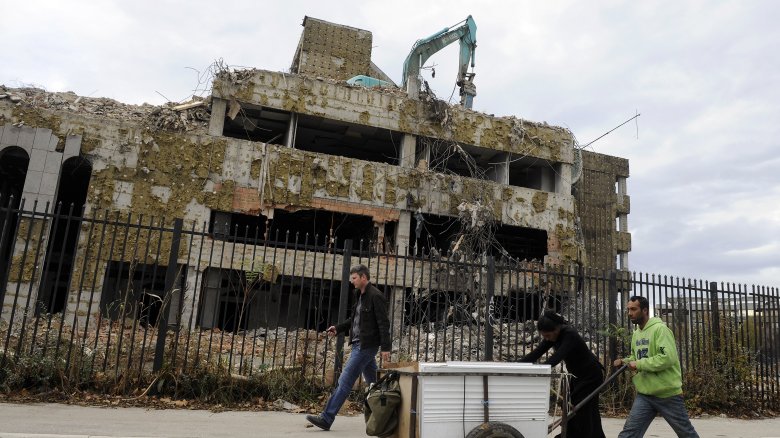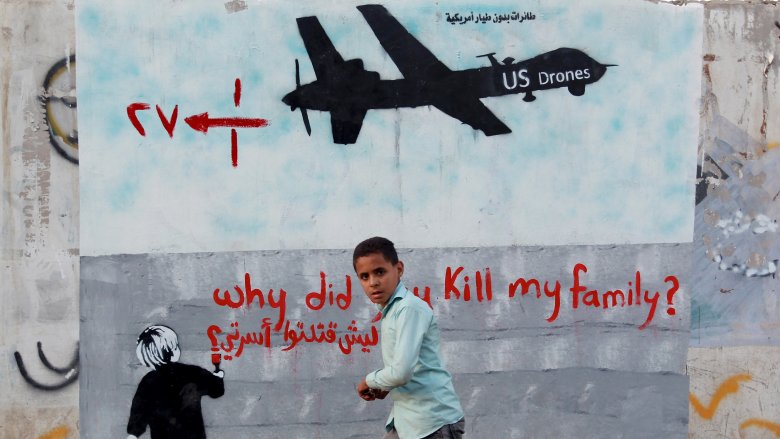Actual War Crimes The U.S. Has Totally Gotten Away With
Sing it all together now. War. Huh! What is it good for? Getting away with crimes against humanity! Those may not have been the exact lyrics Edwin Starr originally sang, but they're probably far more accurate. Cast your eyes over any recent conflict, and you'll see a litany of generals, politicians, and nations that have gotten away with stuff so horrific it defies comprehension. The main exceptions have been stuff like the Nuremberg trials and the many trials held in the aftermath of Yugoslavia's breakup. In those cases, accountability has really only been a thing because the morally outraged U.S. pushed for it so hard.
But that doesn't mean the country pointing the finger has always been in the right itself. While it may have led the charge against Nazi and Serbian war crimes, America doesn't exactly have the cleanest track record on human rights. A couple thousand years ago, Jesus told his followers to remove the planks from their own eyes before criticizing the sawdust speck in their neighbors' eyes. After all these war crimes, Uncle Sam must have an entire redwood forest growing in there.
'Kill everyone over ten'
The Philippine-American War of 1899-1902 is today the sort of war you're likely to completely forget about and flunk a minor history exam due to your abysmal knowledge of. At least, it is if you're American. If you're from the Philippines, chances are the whole debacle has stuck more clearly in your cultural memory, and not just because of the eye-watering discrepancy in death toll (the U.S. Office of the Historian estimates only 4,200 Americans died compared to 200,000 Pinoys). There's also the somewhat sticky issue of the horrendous war crime the U.S. Army committed against the civilian population in Balangiga.
The New York Times has the story. On September 28, 1901, Filipino guerrillas overran a U.S. Army base in Balangiga and massacred everyone inside. Forty-five troops died, with another 22 badly wounded. Some fled into the water, only to be eaten by sharks. When Brig. Gen. Jacob Smith got wind of the massacre, he decided to punch back roughly a trillion times as hard. "I want no prisoners," he said, before ordering that any locals over the age of 10 be killed.
And killed they were. U.S. divisions burned, maimed, and slaughtered their way across Samar province. By the time the action ended, several thousand civilians were dead, among them a whole bunch of preteen children. The only punishment Smith ever got was a forced early retirement and the nickname "Hell Roaring Jake." His remains are still buried in Arlington National Cemetery.
That time the Army shot hundreds of refugees
The idea of sending U.S. troops to deal with scared and desperate refugees can seem a little unhinged even if you've not boned up on Korean history. If you know exactly what names like No Gun Ri signify, it can seem dangerous.
On June 25, 1950, the North Korean army streamed across the border into South Korea, bringing chaos in their wake. Up to 2 million Koreans decamped and sprinted for the "safety" of the American lines to the south. Of course, the U.S. Army didn't see these terrified Koreans as refugees escaping a dictator's advance. In an eerie echo of our own time, they saw them all as potentially dangerous infiltrators. On July 26, Army high command in Korea issued an order that no refugees be allowed to cross the frontlines. The 7th Cavalry Regiment took these orders very seriously.
At the time, the regiment was stationed at a bridge in the village of No Gun Ri that was overflowing with South Korean refugees. The moment they received their orders, they opened fire. Over the next three days, survivors of the Northern invasion were machine-gunned, mass-executed, and strafed by planes. Children, the elderly, and the disabled were all killed by the Americans. Survivors were forced to hide under corpses. It's thought over 400 refugees died at No Gun Ri alone (via BBC). When the Army's subsequent cover-up was finally revealed by the Associated Press in 1999, the Pentagon refused to accept any responsibility.
Occupying Haiti is a dangerous game (for Haitians)
Ah, the U.S. occupation of Haiti. Nineteen long years of foreign intervention that nobody in the States remembers today. There's probably a good reason for this nationwide amnesia. The stuff the U.S. got up to in Haiti was awful. The occupation began on July 28, 1915, for a bunch of reasons that probably seemed really important at the time but now sound laughably childish. Regardless, it coincided with a time when plenty of people in the U.S. thought having dark skin automatically made you less than human. And you better believe the occupying forces brought their Jim Crow attitudes with them. Both the Marines and the Haitian police forces they directly controlled embarked on a spree of lynching and intimidation that put even the Klan to shame.
Just read this summary from France's prestigious Sciences Po institute: "In addition to executions and violence against unarmed combatants, the US Army and its Haitian auxiliaries (the gendarmerie) allegedly committed massive killings and acts of violence against the civilian population. ... These included summary executions, rapes, setting houses on fire after gathering their inhabitants inside them, lynchings, and torching civilians alive; one local public figure was buried alive."
Children were shot by soldiers for sport. Civilians were forced into slave labor on construction projects. The New Yorker reports officials at the time marveled at the idea of the black Haitians speaking "civilized" French. Funny how the jerks making that racist judgement were the ones who acted the least civilized of all.
Bombing a hospital isn't a war crime!
In the dead of night on October 3, 2015, doctors working in the Kunduz hospital in Afghanistan for Medecins sans Frontieres (also known as Doctors Without Borders, or MSF) heard a sickening sound. A U.S. gunship was approaching their combat-neutral building. Worse, it was opening fire. As shells pounded the hospital, panic descended. The explosions set off fires that burned patients alive in their beds. Heavy gunfire decapitated doctors. Some fled outside into the yard, only to be gunned down. For an hour, survivors frantically messaged the U.S. Army, trying to get them to stop the attack, but no one answered. By the time the gunship roared away into the night, 42 people were dead and another 30 injured.
MSF's own report of the attack makes chilling reading. Their hospital was in databases as a non-combat site. But it's the aftermath that will make real shivers pass down your spine. The Obama White House apologized but refused to accept any responsibility. The $6,000 subsequently paid to the families of each victim was offered only as a gesture of "sympathy."
To be fair, there's little to indicate the U.S. deliberately attacked a hospital. To be equally fair, there's a chance this mistake would still classify as a war crime because stupidity is rarely accepted as a defense. International justice expert Pierre Hazan has written that the U.S. gunship may have ignored basic laws of war regarding likely civilian casualties in densely populated areas. Either way, it's pretty sucky that no one got punished for massacring a bunch of innocent doctors, nurses, and patients.
At least our camps are better than yours
The aftermath of World War II left the Allies with a steaming mess on their hands. Europe was completely shattered, heaving under millions of refugees, displaced people, liberated camp inmates, and Axis prisoners of war. As the continent lurched into a food crisis, it was decided that German POWs should be at the bottom of the list for things like shelter and food. To that end, all 2-3 million of them were reclassified as disarmed enemy forces to get around international treaties on the care of POWs, then herded into 19 separate camps. Known as the Rheinwiesenlager, they would become notorious.
The details can still be found on dedicated military history sites. Germans held in the (mostly American-run) Rheinwiesenlager were forced to sleep outside, exposed to the elements and often without access to drinking water. Extreme overcrowding contributed to disease. Inevitably, this had a knock-on effect on survival rates. While the exact numbers are unknown, it's certain that thousands died. A generally accepted figure is somewhere in the region of 56,000. That's peanuts compared to the numbers who died in the Axis camps, but still, holy crap! The U.S. let more POWs die on its watch than people died in the entire Revolutionary War.
However, this is one atrocity where the U.S. doesn't come out looking the worst. Worst would be the neo-Nazi "historians" who wrongly claim over a million Germans died in the Rheinwiesenlager as a way of drawing false equivalence between the Allies and the Axis actions.
The chemical that burns like napalm
In October 1980, the U.N. passed the Protocol on Incendiary Weapons. Its basic aim was to make sure words like "napalm death" were henceforth only used in regards to mediocre death metal music; the protocol heavily restricted napalm usage on the battlefield. It also did the same for white phosphorus, otherwise known as napalm's equally awful younger brother.
A bright burning munition, white phosphorus is great to use on the battlefield because of its ability to either light up a darkened conflict zone or to obscure your own movements with smoke. It's less great to use around civilians because of the risk of horrific injuries. The Independent reports that white phosphorus burns through skin and down into the bone, and also releases poisonous gas that scorches your eyes and lungs. Care to guess who used it in populated areas in Iraq?
If you guessed anything other than "good ol' Uncle Sam," you may want to go back and double-check the title of this article. In 2005, the Guardian reported that U.S. forces had used white phosphorus as a weapon during the battle of Fallujah. Although white phosphorus isn't in itself illegal, using it in a populated urban area — like downtown Fallujah — most certainly is. The U.S. response to this revelation? Amends were made and it never happened ag– ... nope. In 2017, NPR reported the U.S. was using it in Iraq again.
When murders in El Salvador were even worse
There are few countries quite so murderous as El Salvador. In 2015, El Salvador became the most dangerous country that wasn't an active war zone (via Council on Foreign Relations). While it has since improved, it's still a violent place. One reason for this is the aftereffects of the country's civil war, which ran from 1980-1992, killed over 75,000, left the economy in ruins, and damaged state institutions so badly they're still recovering. What's all this got to do with the U.S., you ask? It was the Reagan White House that was training and funding the guys doing most of the killing.
If you need a quick primer on Ronald Reagan's foreign policy, it can basically be summed up as "not liking Communists." Following a Socialist revolution in Nicaragua, Reagan was keen to stop the reds from spreading any further. So when faced with a peasant revolution and a far-right government that wanted to crush them, his guys naturally sided with the fascists. In practical terms, that meant equipping Salvadoran death squads that massacred civilians while the Pentagon covered it up (via the Nation).
A U.N. investigation later concluded 85 percent of all civilian casualties in the war were caused by U.S.-aligned forces. In perhaps one of the grimmest ironies of the war, an American-trained battalion that killed 1,200 villagers in a single massacre had just completed a U.S. Army training course on human rights (via the Atlantic). Perhaps the course was subtitled "How to Ignore Them."
Death from above
It was the late 1960s, and Henry Kissinger had a problem. It was the middle of the Vietnam War, and things were going as badly as they had ever since the U.S. decided to get involved. Viet Cong were now regularly crossing into Cambodia from North Vietnam to regroup. Since Cambodia wasn't in the war and hadn't requested U.S. aid, there legally wasn't a lot the U.S. could do. Luckily, this was the Nixon White House, so legality took a backseat to whatever shenanigans Kissinger and Tricky Dick felt like pulling that day. Which is more or less how America wound up illegally and clandestinely bombing Cambodia back to the dark ages.
Salon has the full story. In 1969, the U.S. began small covert bombing runs into Cambodia. These soon grew into not-so-small bombing runs, which in turn grew, by 1975, into flat out carpet-bombing the whole country. Entire villages were obliterated. People were killed on a grand scale that, as journalist John Pilger has demonstrated, left Cambodia's terrified, rural survivors more than receptive to the message of up-and-coming dictator Pol Pot. When the bombing started, Cambodia was in danger of falling to moderate Communists. After the bombing, it fell to extremist loonies so bloodthirsty even Stalin would run in terror.
Not that anyone in the White House would ever face any sort of sanction for this flagrant war crime. Nixon would be disgraced for covering up a burglary, not blowing up half a country, while Kissinger became an elder statesman of U.S. politics.
That time the U.S. bombed the Chinese embassy
In spring, 1999 NATO forces began bombing the remnants of Yugoslavia (modern-day Serbia, Kosovo, Macedonia, and Montenegro) in retaliation for Serbian atrocities in the Kosovo War. Secretary of Defense William Cohen called the strikes "the most precise application of airpower in history," which may be stretching things a little. While only 500 civilians died in the entire campaign, a tally exceeded on a nightly basis during the bombings of Germany and Japan, some of those bombs weren't quite as precise as Cohen claimed. Like that time U.S. missiles hit the Chinese embassy in Belgrade (above, in ruins), killing three journalists and injuring 20 staff (via National Interest).
The official story is that the bombing was an accident, and it's true that the Clinton White House basically responded by begging Beijing for forgiveness. But there are some (admittedly controversial) reasons for believing the airstrike was deliberate. And you don't have to be a paid-up member of the Politburo to agree.
In 1999, respected journalists John Sweeny and Ed Vulliamy outlined in the Guardian what may have happened. They included reports from sources in the U.S. intelligence community that signals had been detected from inside the Chinese embassy helping to direct Serbian troop movements. The theory ties in with other fishy facts, such as the Chinese embassy's location being well-known to U.S. officers, and the supposed target not actually existing. Is this InfoWars-level paranoia, or did the U.S. really cover up a war crime? For now, you'll have to judge for yourself.
You may now blow up the bride
The 2000s were an incredibly unfun time to be doing anything in Afghanistan, especially if that "anything" involved standing around in the mountain regions and hoping a drone wouldn't mistake you for a terrorist and blow you to pieces. The U.S. drone war was notorious for killing civilians, even if research (like this analysis from the Bureau of Investigative Journalism) suggests the main victims were Taliban fighters. But there's no doubting the biggest screw-ups in drone history: that icky period when U.S. drones kept blowing up weddings.
The high water mark of this unfortunate campaign came in 2008, when two separate U.S. strikes managed to obliterate two wedding parties less than six months apart. The first came in July of that year when, the Guardian reports, a missile went off course during an attack on militants and smashed into a wedding, killing 47, mostly women and children. The second came in November, when the U.S. mistook a wedding procession for an insurgent army and directly bombed it, leaving 90 people dead, including the bride (via Reuters). Both times, the U.S. was initially all like "What, those guys? Clearly terrorists," before being confronted with overwhelming evidence to the contrary.
But hey! It's not just weddings Uncle Sam likes to bomb. In 2017, the Yemeni minister of human rights wrote a scathing article recounting the countless times U.S. missiles came streaking from the blue skies above his country and wiped out families, weddings, and villages. Keep up the good work, boys!
